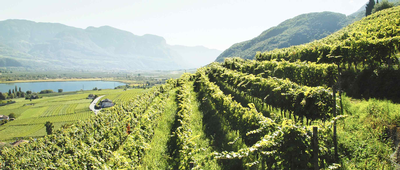Our blog was created to help make the world of wine and beer easier to understand and fun to navigate. There are a million things to know in this industry, we just want to help you understand the latest news and trends from around the globe. So sit back with your favorite sip and let's go on an adventure.
Sauvignon Blanc Survival 6-Pack
Sauvignon Blanc Survival 6-Pack, SHOP HERE

Frog’s Leap Sauvignon Blanc 2018
- Napa Valley
- Organic
- Dry farmed
- Harvested at 21.4 brix
- Fermented and aged in stainless steel
- 92 points Wilfred Wong
- Nectarine, granny smith, nettle
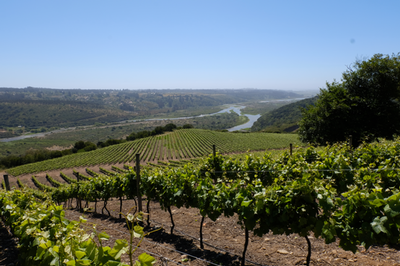
Leyda Sauvignon Blanc 2018
- Valle de Leyda, Chile
- 12 miles from the ocean
- Blend of 3 clones
- Harvested at 20.8-22.8 brix
- 50% macerated for 8 hours, 50% whole cluster pressed
- Fermented at 55 degrees in stainless steel
- Aged 5 months on lees
- Pomelo, tangerine, snow pea

Seresin Sauvignon Blanc 2018
- Marlborough, New Zealand
- 91% Sauvignon Blanc, 9% Semillon
- 20-year-old vines
- Organic and biodynamic estate fruit
- Whole cluster pressed
- Native yeast fermentation in 80% stainless steel, 20% oak barrels
- Aged on lees for 9 months
- 91 points WA, 91 points Bob Campbell MW
- Guava, passionfruit, cut grass

Chateau l’Escart Comtesse 2018
- Bordeaux blanc, Entre-deux-Mers between Garonne and Dordogne
- 80% Sauvignon Gris, 15% Semillon, 5% Muscadelle
- Clay, limestone, and gravel
- Biodynamic
- Vines averages 45 years old
- Built in the 18th century
- Native yeast fermentation
- Meyer lemon pith, white flowers, crushed rock

Regis Minet Pouilly-Fume Vieilles Vignes 2018
- 100% Sauvignon Blanc
- Kimmeridgian limestone
- 25-acre vineyard
- 30+-year-old vines
- Fermented in stainless steel
- Aged 6 months in stainless steel w/some lees stirring depending on vintage
- Native yeast fermentation
- 91 points WE
- White grapefruit, green apple, flint
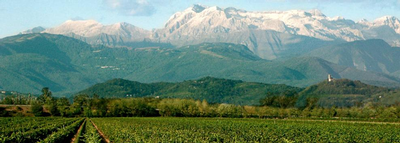
Vie di Romans Piere Sauvignon Blanc 2017
- Friuli, Italy
- 100 % Sauvignon Blanc, Italian clones
- Gravel and clay
- Fermented in stainless steel, aged 6 months on lees
- 91 points W&S
- Ripe lime, raw honey, lemon verbena
Sauvignon Blanc Survival 6-Pack, SHOP HERE
Grenache Innovation & Groovy 3-Pack
Grenache Innovation

The oldest Grenache vines in the world, planted in 1848, McLaren Vale, Australia
“Yes, there are some pretty things in life.”
-Louis Reynaud, Chateau Rayas, over a glass of Grenache.
Grenache is a warm hug in the sunshine from an old friend. It’s a joyful variety, filled with red fruit and spice draped in a soft, silky texture. Unlike Pinot Noir, another thin-skinned variety, it is precocious and generous, sometimes to a fault. In fact, one of the few criticisms of Grenache is that it often carries too heavy of a crop. Randall Grahm, Grenache innovator and enthusiast, says that it “really walks a fine line between elegance and rusticity.”
As a vine, it thrives in hot, dry, windy locales where less exuberant varieties would struggle. Grenache probably hails from the Spanish region of Aragon (also known as Strider, ranger of the North) between Madrid and Barcelona, though Sardinia also claims it as its own (known regionally as Cannonau). It swiftly spread throughout the world’s Mediterranean climates. In France, its pepper and raspberry intensity became the hallmark of southern Rhône blends like Châteauneuf-du-Pape and Gigondas. Grenache was also used to bolster prestigious wines from regions with more marginal climates: 19th and early 20th century negociants in Burgundy bought large quantities of Gigondas to stiffen and sweeten poor vintages of Pinot Noir (much like the relationship between the Bordelaise and the sturdy Syrahs of Hermitage).
Grenache was planted around the same time in Australia, especially in the Barossa Valley and McLaren Vale, for fortified wine production. While the Australian government has occasionally subsidized vine-pulling, many old vineyards still endure, including the oldest commercial Grenache vineyard in the world. Taras Ochota, owner and winemaker of Ochota Barrels, started his company with a 70-year old Grenache vineyard he named Fugazi (after an 80s rock band formed by Ian MacKaye, a famous teetotaler). He discovered the vineyard during a heat spike. Younger surrounding vineyards were struggling with the heat, but the deep-rooted old vines were verdant and healthy, with small clusters of intensely flavored fruit.
Age seems to tame some of Grenache’s difficult tendencies throughout the world. Patrick Comiskey described early efforts in California as ”a large-pawed puppy that refused to settle down. While you might appreciate the exuberance, you may long for a little gravitas.” Age brings yields down, trading exuberance for efficiency (like it often does in us as well).
Grenache is one of the few varieties that everyone in the shop seems to love. As a thin skinned, low acid variety, the wines are unique in that much of their structure comes from their ripeness and alcohol. Some producers, especially old-school producers in the Rhône and the new kids on the block in Australia, use whole cluster fermentation to fortify the tannins of Grenache. Earlier picked examples often smell like fresh strawberries and white pepper, while riper examples can lean towards black cherry or currant with accents of licorice root. Regardless of the country of origin, ripeness, or vinification, a glass of Grenache should always be fun.

Sierra de Gredos, Spain
Groovy Grenache 3-Pack, SHOP HERE
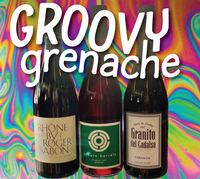

Granito del Cadalso 2017
- Vinos del Madrid
- Bodega Cooperativa Cristo del Humilladero, co-op of over 400 families
- Winemaking consultation by Dani Landi and Fernando Garcia of Comando G
- 100% Grenache
- 20-70 year old vines
- 15-20 day maceration in concrete
- Aged 6 months in concrete
- 92 points Jeb Dunnuck
- Raspberry, orange peel, jamon

Ochota Barrels The Green Room 2019
- Mclaren Vale
- 82% Grenache, 18% Syrah
- Planted 1946
- Limestone and schist
- 85% whole cluster fermentation
- 28-88 day maceration
- Aged 2 months
- Unfined, unfiltered
- Red plum, black cap, thyme

Rhône By Roger Sabon 2017
- Cotes du Rhône
- 85% Grenache, 10% Syrah, 5% Cinsault
- Clay and limestone
- 10-15 day maceration
- Aged 6 months in tank
- 91 points Jeb Dunnuck
- Raspberry, dried strawberry, fennel
Groovy Grenache 3-Pack, SHOP HERE
Regional Viticulture & Jet-Setting Pinot Noir & Chardonnay
Regional Viticulture - Where vs. How

Chuy Vineyard, Sonoma Valley, Chardonnay
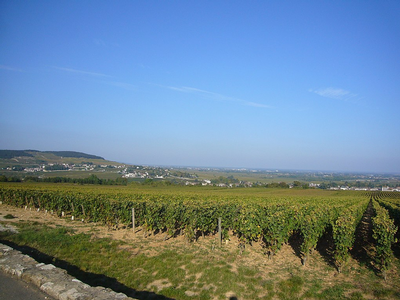
Puligny-Montrachet, Cote de Beaune, Chardonnay
Both of the above vineyards are planted to Chardonnay, though that is where their similarities end. Chuy Vineyard (RIP) was planted at very low density in a warm, Mediterranean climate with vigorous soils. The Puligny-Montrachet climat is planted at a very high density on meager limestone and clay soils in a cool, wet, continental climate. Chardonnay and Pinot Noir call Burgundy home, but they are perfectly happy in California, Oregon, or Patagonia. Grapes generally travel well (looking at you, Nebbiolo), and lucky for us they like to talk about where they are from. A tropical, full-bodied, lush Chardonnay probably comes from a warm climate, whereas a steely, lemony version most likely hails from a more marginal region.
Most winemakers will tell you that fine wines are made in the vineyard. They’ll also tell you, “If you want to make Chablis, you should probably move to Chablis.” Regional identity is not just about weather, soil, and aspect (what I think of as the where of a vineyard). Farming techniques, the how, can also have a huge impact on the finished wine. Just like the Cru system rigidly defines the geographical boundaries of individual Burgundian vineyards, the appellation system also sets limits on yields, styles of pruning, vineyard density, and other viticultural practices. The set-up and farming of a vineyard is the integration of people with a place. You have to answer both of the questions: the how as well as the where.

These Assyrtiko basket vines in Santorini are shaped by the black volcanic soils, the whipping winds, and the beating sun of the island. They are also literally shaped by human hands to compensate for these environmental pressures. The basket pruning protects the clusters from the wind, and the sparse planting density allows the vines to survive with very little rain. Let’s explore some of the regional farming choices that create the wines we love.

Bethel Heights Vineyard, Willamette Valley, Pinot Noir
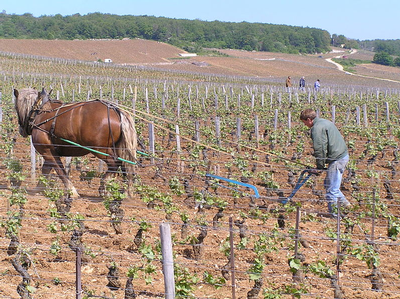
Romanee Conti, Cote de Nuits, Pinot Noir
Density
Density is the number of vines in a given area, usually calculated by acre or hectare. The Pinot Noir vineyards above show two different regional approaches. Bethel Heights, one of the oldest vineyards in the Willamette Valley, was planted at fairly low density, with wide vineyard rows and lots of space between the vines. Romanee Conti, like most of the vineyards in Burgundy or Bordeaux, is planted much more densely, with 4,000 vines per acre. This becomes consequential when we look at yield on a per plant basis. In order to produce 2 tons/acre (which is close to the maximum allowed yield for Grand Cru vineyards), each of the Burgundian vines will only have to produce 1 pound of Pinot noir grapes, whereas the vines in Oregon need to crank out 5 times as much fruit per vine!
Vine Structure

Gobelet-trained vine in Châteauneuf du Pape
Vines come in all shapes and sizes, from the tiny single-guyot vineyards of Burgundy and Bordeaux to hulking head-trained, spur pruned vines in Lodi or Mendocino, some of which have to be picked using a ladder. Each vine is touched every dormant season, usually by human hands, blending, sculpting, and farming. Oftentimes a region will have its own signature style, as in Châteauneuf du Pape’s gobelet vines (Syrah is the only variety that is allowed to be trellised there, as its sprawling growth makes it difficult to head train).
Vine Material
Before the advent of certified clones, vines were propagated more like loaned books. Exceptional vines would be replicated, traded, and passed around. Many vignerons still refuse to plant certified clones, preferring to propagate massale selections from distinctive vines within their own vineyards. Pinot Noir and Chardonnay are both known for their diverse selections. There are hundreds of clones of each, some sanctioned, some illicit (suitcase clones). Oregon’s early wine industry was built on the backs of just two Pinot selections: Pommard and Wadenswil. California has many heritage selections, often named after famous vineyards and winemakers (Swan, Calera, Mt. Eden, etc).
For whites, it’s hard to imagine what the California Chardonnay landscape would look like without Wente clone, often called shot Wente because of its propensity for “shot” berries (millerandage). This old selection has become highly sought after because of its distinctive aromas and ability to retain acidity in California’s sun.
There are many, many other cultural and regional vineyard choices that impact the way the vines grow and how a finished wine tastes, such as vineyard floor management, canopy management, or irrigation. The next time you’re drinking a bottle of Pinot Noir or Chardonnay, whether it be from Burgundy, Oregon, or California, remember that you’re not just tasting the grape, you’re not just tasting the dirt – you are tasting the choices made at every step by the people involved.
Jet-Setting Pinot Noir & Chardonnay 6-Pack - SHOP HERE

Maison Roche de Bellene Bourgogne Pinot Noir VV 2017
- 100% Pinot Noir
- Cote de Beaune and Cote Chalonnaise
- 30-80-year-old vines, average 50 years old
- 4000 vines per acre
- Clay and limestone soils
- Native yeast fermentation
- 80% barrique aging, 20% stainless steel
- Red cherry skin, strawberry, clove

Maison Nicolas Potel Macon-Villages Blanc 2016
- 100% Chardonnay
- Handpicked
- Fermented and aged in stainless steel
- Bosc pear, honey, fresh almond

Hahn SLH Pinot Noir 2016
- Santa Lucia Highlands AVA
- Estate-grown
- ⅓ new French oak aging for 11 months
- 91 points WE, 90 WS, 90 points VM
- Black cherry, blackberry, oolong tea

Flowers Chardonnay Sonoma Coast 2017
- West Sonoma Coast
- Aged in <20% new French oak for 11 months, then stainless for 3 months
- 94 points James Suckling, 93 points WE, 90 points WA
- Orange blossom, fresh pineapple, allspice

McKinlay Vineyards Pinot Noir Willamette Valley 2018
- Willamette Valley AVA
- Dry farmed
- Native yeast ferment
- Up to 25% new French oak, depending on vintage
- Unfined, unfiltered
- Strawberry, rose, cola
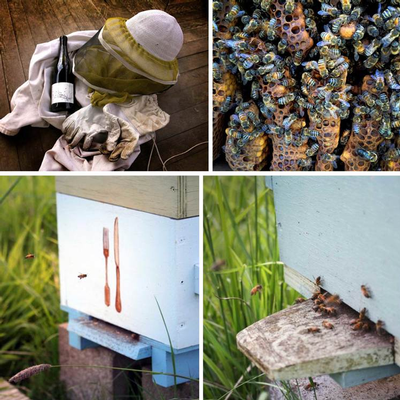
Big Table Farm The Wild Bee Chardonnay 2018
- Willamette Valley AVA
- Barrel fermented in French oak
- Native yeast fermentation
- Unfined and unfiltered
- 93 points James Suckling
- Green apple, lemon curd, pie dough
Jet-Setting Pinot Noir & Chardonnay 6-Pack - SHOP HERE
Headlong into Summer: Panzanella and Italian Wine for Long Evenings
Tuscan Sangiovese at Salvioni la Cerbaiola
"Only two things money can't buy,
That's true love and homegrown tomatoes."
- Guy Clark
There will come a point this summer when someone you care about will offer you a garbage bag full of ripe tomatoes. You will take the bag, thank them, and promptly make yourself a BLT, or an A(vocado)LT if you don’t eat meat, or a T(urkey)BLAT if you like attempting to eat sandwiches that are too tall to eat. In the following days, maybe you’ll enjoy your tomatoes plain, just sliced with a little olive oil, flaky salt, and black pepper. Perhaps there is a Caprese salad or two in your future. Somehow, you’ll whittle your way through the giant pile of lovingly-grown tomatoes, thanking your friend with every ruby slurp. How did you make it through the previous 3 seasons without a real, ripe tomato?
There will also come a point this summer when that same loved one will show up on your doorstep with an even larger “put the money in the bag” bank robbery-style duffel filled to the brim with tomatoes that are approximately 27-minutes from overripe. There will probably be a cloud of fruit flies, and your friend will have a wild, desperate look in their eyes. Today is the day - you’ll think - break out the confetti. We have reached Peak Tomato.
It happens every year. Driven mad by 6+ consecutive months without a decent tomato, amateur gardeners throughout town will plant an array of heirloom varieties, filling their yards/garden boxes/highway medians to the brim. “Look how tiny those seeds/starts are,” they’ll think, forgetting the tomato leaf jungles of the previous summer, “I should put in a few more.” The tomatoes will grow tall and heavy in the Walla Walla sun, propped and cradled by cages like deliciously swaying suspension bridges.
This year’s quarantining has led to an explosion of gardening. Everyone has been trapped at home with images of empty supermarket shelves. I don’t mean to be alarmist, but I’m predicting a Peak Tomato season the likes of which this county has not seen in decades. Luckily, many folks have also been experimenting with bread baking. Tomatoes + Homemade Bread + a few odds and ends = Panzanella! Panzanella is a Tuscan bread and tomato salad that is delicious, easy to make, and infinitely customizable. Toss in some cheese, omit the olives, trade the basil for some other leafy herb, add some arugula, etc. As long as you’ve got tomatoes, a country loaf, and good olive oil, you’re set. It’s never too early to prepare for Peak Tomato!
Pair your Panzanella with a medium-bodied, Sangiovese-based wine from Tuscany, like the ones found in our Italian six-pack. Sangiovese’s combination of red fruit flavors (especially cherry), fresh acidity, and savory balance of leather, clove, and yes, even tomato leaf, make it a fantastic pairing with homegrown tomatoes. As always, the original rule of wine pairing applies - drink what they drink in the region that the food is from.
Panzanella
1 loaf of homemade bread, regardless of how successful, cut into 1” cubes
15-20 basil leaves, torn or chiffonaded
1 cucumber
Some amount of homegrown tomatoes, up to and including 1 metric garbage bag full. (or, ya know, 2 of them), cut into bite sized chunks
½ red onion or 1 large shallot, thinly sliced
½ cup olives, halved and pitted (squish them with the back of your knife or a plate)
Kosher salt
Black Pepper
2 tablespoons red or white wine vinegar
At least 8 tablespoons olive oil, divided
1-2 cloves garlic, grated or otherwise smooshed
- Preheat your oven to 350F.
- Place your chunked tomatoes into a colander in the sink. Season with 1-2 teaspoons kosher salt, tossing to coat. Drain for at least 30 minutes. I found this technique on Serious Eats, and it really makes the difference between a crunchy Panzanella and a squishy one.
- Toss your bread chunks with 2 tablespoons of olive oil, then toast for 10 minutes on a baking sheet, or until crunchy and lightly browned. Set aside to cool.
- Cut your cucumber in half. Scoop out the seeds, then chop into bite sized chunks.
- In a bowl, whisk together your garlic, shallot, and wine vinegar. Drizzle in your remaining olive oil, whisking constantly, to form a dressing. Season with salt and pepper.
- Toss together your dressing, tomatoes, cucumbers, olives, basil, and bread. Adjust seasoning accordingly.
- Open your bottle of Sangiovese. You should know what to do next.
ITALIAN WINES FOR THE SUMMER 6-Pack, Shop HERE
Alois Lageder Terra Alpina Pinot Grigio 2018
- 100% Pinot Grigio
- Calcareous dolomitic limestone
- Vines mostly trained on pergolas
- Converting to organic viticulture
- Aged 4 months on lees
- Vegan
- Lemon, poached pear, white flowers
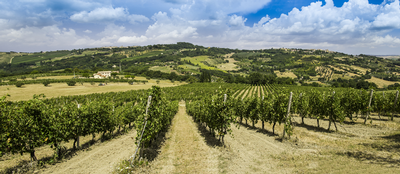
Umani Ronchi CaSal di Serra Verdicchio 2018
- Castelli di Jesi DOC
- 100% Verdicchio
- Organically grown
- Clay loam
- Fermented and aged in stainless steel on lees
- 91 points Wine Enthusiast
- Apricot, yellow apple, jasmine
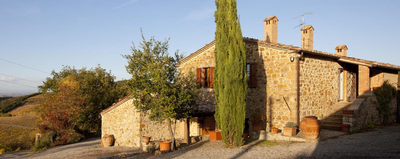
Casanuova delle Cerbaie Rivale 2011
- Toscana IGT
- Just south of Montalcino
- 70% Sangiovese, 30% Merlot
- Mixed clay
- Aged 10 months in french oak
- Red cherry, fresh plum, leather
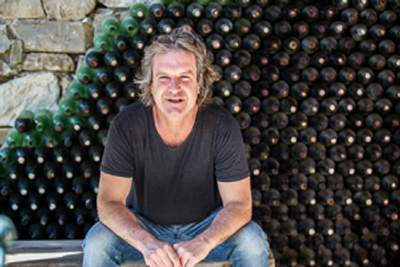
Bibi Graetz Casamatta 2018
- Toscana IGT
- 100% Sangiovese
- Translates to “crazy house”
- Fermented and aged 6 months in stainless steel
- 90 points James Suckling
- Raspberry, cherry, iron

Pecchenino san Luigi 2017
- Dogliani DOCG
- 100% Dolcetto
- 25-35 year old vines
- Fermented and aged in stainless steel
- 92 points VM, 90 points W&S, 90 points James Suckling
- Blueberry, elderberry, lavender

Sommariva Il Rosa Spumante Brut
- Just outside Prosecco Superiore
- 60% Raboso, 40% Pinot Nero (Noir)
- Clay soil
- Hand-picked, direct pressed
- Fermented and aged in stainless steel
- No malolactic
- 12g/l dosage
- Strawberry, honeydew melon, cucumber
Italian Wines for the Summer 6-Pack, Shop HERE
In Support of Walla Walla Wineries & Rosé 6-Packs
In Support of Walla Walla Wineries.
Our local wineries have lost out on more than two months of prime tourism due to COVID-19. Tasting rooms that often serve as a winery’s first introduction to new customers have been shuttered, and the restaurants that normally fly through local wines by the glass or bottle have been limited to takeout service. Luckily, working in the wine industry has always demanded creative solutions to unforeseen problems. “How am I going to fit five tons of fruit into that 3-ton press?” “What do I do with this Zinfandel rosé from a stuck fermentation?” “How do I make this steel container smaller?” (the answer to the last one was a big hammer). Most importantly, “How do I get my wine to consumers safely and efficiently in a time of social distancing?” Here are some inventive solutions from the wineries featured in our rosé six-packs. Please support our local wine community. These are all local business owners, but they’re also our neighbors and our friends.

The Walls
The Walls is offering personal private tastings from home featuring 3-4 bottle flights (at a substantial discount), tasting notes, and a virtually led tasting. They are also offering $10 flat rate shipping on 6 bottle purchases.
509.876.0200
reservation@thewallsvineyards.com

El Corazon
El Corazon’s tasting room will be open beginning June 5th. They have offered free shipping on 3+ bottle shipments to the Pacific Northwest, as well as curbside pickup and local delivery.
http://www.elcorazonwinery.com/
509.520.4408
info@elcorazonwinery.com
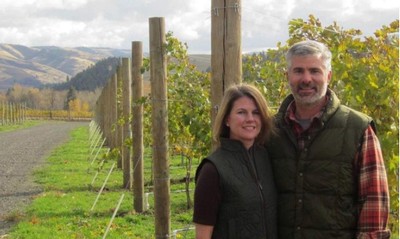
Aluvé
Aluvé is offering tastings at the winery with a scheduled appointment. They are adhering to the guidelines of Phase 2 with indoor or outdoor seating (weather permitting) for up to 4 groups of up to 5 guests. Appointments include a 45-minute tasting and zero contact checkout, with a 15-minute buffer for sanitizing before the next reservation.
509.520.6251
info@aluvewine.com

Gramercy Cellars
Gramercy has posted a Cayuse Weekend live tasting YouTube video to their website featuring co-winemakers Greg Harrington MS and Brandon Moss. Their tasting room will reopen for tastings June 5th with appointment, and there will be slots available Tuesday-Saturday.
509.876.2427
nichole@gramercycellars.com

College Cellars
College Cellars is offering a 20% case discount, as well at $10 flat rate shipping on packages of 6 bottles or more. They have not reopened their tasting room yet, but they are offering delivery to the Walla Walla area. Also, Sabrina Lueck has been posting some fantastically informative wine videos to her YouTube channel, and there is also a video of her sabering the sparkling Grenache using a roofing hammer floating around the interwebs.
509.524.5170
collegecellars@wwcc.edu

Hoquetus Wine Co.
Robert Gomez, winemaker for Hoquetus, has hosted several blind tastings on Instagram, including head to head battles with Time & Direction winemaker Steve Wells. Hoquetus is offering $20 flat rate shipping on 6+ bottle orders.
509.312.9148
info@hoquetuswine.com

SMAK Wines
SMAK is offering free local delivery in Walla Walla, Dayton, Waitsburg, and Milton-Freewater, as well as curbside pickup. Their tasting room will reopen on June 5th under the guidelines of Phase 2.
509.629.9643
info@smakwines.com

itä Wines
Itä’s new tasting room at the airport is now open to the public on Thursday-Sunday. Reservations are encouraged, but walk-ins will be accepted on a first-come basis. Folks can reserve a tasting on the website or by phone. They are offering $15 flat rate shipping on 6+ bottle purchases and free local delivery.
.509.593.9055
info@itawinery.com

Prospice
Prospice is rolling out two different options for scheduled tasting appointments. They will offer a 45-minute seated tasting for groups up to 5, or a 75-minute cellar tasting hosted by one of the winemakers. They are also offering curbside pickup or Walla Walla area delivery for folks who would like to purchase without a tasting. They are waiving shipping on orders of more than $400.
509.204.3184
info@prospice.wine
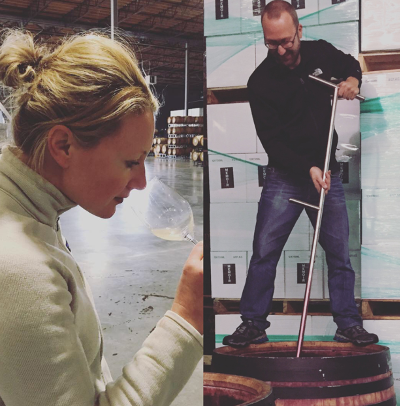
Grosgrain Vineyards
Grosgrain has gotten the message out with its first live-streamed interview and an assortment of options for consumers including curbside pickup, free local delivery, and $10 flat rate shipping. They are now open for scheduled appointments in their tasting room.
https://grosgrainvineyards.com/
509.876.4045
info@grosgrainvineyards.com
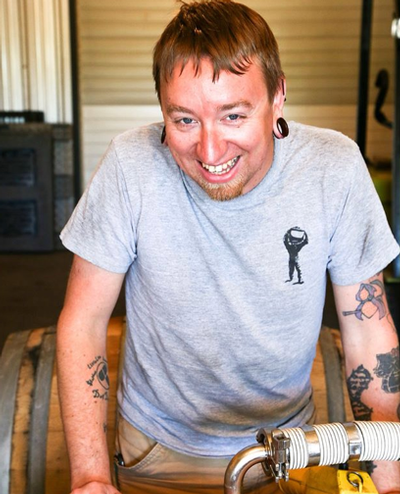
Lagana Cellars
Lagana is offering $10 shipping on 3 bottle purchases and free shipping on 6+ bottle orders. They are giving back to the community with a 5% donation to the BMAC food bank on all 6+ bottle purchases. Their tasting room is now open for walk-ins or scheduled appointments, and they will continue to offer curbside pickups and local delivery.
http://www.laganacellars.com/wp-data/
509.876.0001
jason@laganacellars.com
Walla Walla Rosé Six Packs Include:
PACKAGE #1 - SHOP HERE
Hoquetus Rosé 2019
- 100% Cabernet Franc
- Crushed, left on the skins for 6 hours
- Fermented in neutral oak for 8 weeks
- Blue Mountain Vineyard
- Walla Walla Valley AVA
SMAK Wines Spring Rosé 2019
- 100% Sangiovese
- Walla Walla Valley AVA
ïta Rosé 2019
- 100% Primitivo
- 6 hours skin-contact
- Fermented and aged in stainless steel
- Les Collines Vineyard
- Walla Walla Valley AVA
Prospice Rosé 2019
- 55% Syrah 25% Counoise 20% Grenache
- Fermented in stainless steel
- Aged 5 months in 80% stainless, 20% neutral oak
- Resurgent Vineyard (Syrah), Breezy Slope Vineyard (Counoise, Grenache)
- Walla Walla Valley AVA
Grosgrain Rosé 2019
- 100% Grenache
- Foot trod, whole cluster pressed
- Grown specifically for rosé
- Aged primarily in concrete egg
- Angiolina Farm
- Yakima Valley AVA
Lagana Rosé 2019
- 100% Pinot Noir
- Dijon Clone 115
- 92% stainless steel 8% acacia barrel
- Breezy Slope Vineyard
- Walla Walla Valley AVA
- 85 cases
PACKAGE #2 - SHOP HERE
The Walls Cruel Summer Rosé 2019
- 78% Grenache 28% Mourvédre
- Direct pressed
- Fermented and aged in stainless steel
El Corazon Red Frog Rosé 2019
- 100% Malbec
- Birch Creek Vineyard
XOBC Cellars Evangeline Rosé 2018
- 60% Syrah 40% Grenache
- 91 points Washington Wine Blog
- Rocks District of Milton Freewater AVA
Aluvé Rosé 2019
- 100% Sangiovese
- Seven Hills Vineyard
- Walla Walla Valley AVA
- 75 cases
Gramercy Cellars Rosé 2019
- 44% Cinsault 28% Grenache 28% Syrah
- Brief maceration before press
- Fermented and aged in stainless steel
- Grown specifically for rosé production
- Olsen Vineyard
- Yakima Valley AVA
- 93 points Washington Wine Blog
College Cellars Sparkling Rosé 2018
- 100% Grenache
- Walla Walla Valley AVA
BUY BOTH PACKAGES & SAVE 10%
(USE COUPON CODE CASEDISCO)
South American Wines Take You Higher
Shop the South American 6-Pack HERE

Argentina
The highest elevation commercial vineyard in Washington state (that I know of) sits at 2,900 feet, or about 2,000 feet higher than my Walla Walla apartment. That seems really high! The highest elevation vineyards of the world, however, rise to more than 10,000 feet.1 They perch on the sides of mountain ranges from the Alps to Himalayas, battered by wind and hail, so high that even the sun is a hazard.
Every wine region has its own definition of “high elevation”. Here in Walla Walla, any vineyard about 1,200 or 1,300 feet is pretty high, and the AVA stops at 2,000 feet. This is also true throughout Europe, where very few vineyards sit above 1,500 feet.2 In Argentina, where many vineyards have been planted above 3,000 feet, elevation is a symbol of quality, a feather in the cap for winemakers that is often printed on the wine’s label.

Valle D'Aosta
High elevation vineyards face many challenges. Growing seasons are often truncated, starting later and ending sooner than valley floors. As you climb, temperatures drop, especially at night, making ripening a constant struggle. Catastrophic weather events, especially frost and hail, can eliminate whole crops in a matter of minutes. Some producers in Argentina have even invested in giant, very expensive nets to repel hail.
The benefits, though, are well worth the struggle. Colder nights may slow ripening, but they also maintain acidity in the grapes, a valuable attribute in an otherwise warm region like Mendoza. Mountain soils tend to be very (sometimes excessively) well-drained, driving roots deep in their search for water and nutrients. Then there is the sun: for every 1,000ft increase in elevation, there is a 10% increase in ultraviolet intensity. This extra UV causes the grapes to grow thick skins with increased polyphenols and tannins, sort of like natural sunscreen. This also leads to more intense wines.
Laura Catena, Managing Director of Bodega Catena, knows a thing or two about high elevation vineyards. Her father pioneered extremely high elevation planting in Argentina with Adrianna Vineyard at 5,000+ feet. Her new project, Domaine Nico, takes inspiration from her father’s pioneering work with Malbec and Cabernet Sauvignon and applies it to Pinot Noir. While Malbec and Cabernet are naturally thick-skinned varieties, Pinot Noir has famously thin skins. The increased UV from Domaine Nico’s 3,500-4,000+ elevation vineyards lends intensity and grip to Pinot’s traditional suave perfume. These tightly wound mountain wines impressed the heck out of us at a recent tasting, so we are currently featuring three different bottlings in the shop. Bring a bottle home, give it a long decant, and try not to get vertigo.
[1] 11,000 feet for the aptly named “Pure Land & Super High Altitude Vineyard” in Tibet.
[2] Vineyards in the Valle d’Aosta and Canary Islands extend as high as 4,000-5,500 feet.
South American 6-Pack

Bodega Amalaya Blanco 2019
- Calchaqui Valley, Salta, Argentina
- 90% Torrontes/ 10% Riesling
- Planted at nearly 6000 feet elevation
- Sandy soils
- Amalaya means “hope for a miracle”
- 91 points James Suckling
- Green apple, grapefruit, honeysuckle
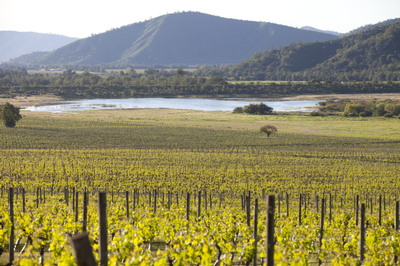
Veramonte Sauvignon Blanc 2018
- Casablanca, Chile
- One of the first vineyards planted in the region
- Organic viticulture
- Less than 15 miles from the Pacific Ocean
- Decomposed granite soils
- Largest contiguous vineyard in Chile
- Pineapple, green banana, candied citrus
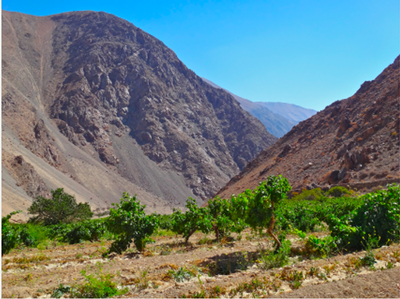
Vina Mayu Pedro Ximenez 2018
- Elqui Valley, Chile
- Name means “river of stars”
- 100% Pedro Gimenez, a different grape than Pedro Ximenez from Jerez
- 65-70 year old ungrafted vines trained alberello style without trellis
- 6,320 feet elevation, the highest vineyard in Chile
- Limestone soils
- Fermented and aged in stainless steel
- No malolactic fermentation
- Aged on the fine lees with battonage
- 90 points Wine Advocate
- Lime, white flowers, powdered rock

Bodega Chacra Barda Pinot Noir 2018
- Patagonia, Argentina
- 94 points James Suckling, 93 points Wine Advocate, 91 points Wine Enthusiast, 90 points Vinous
- Biodynamic vineyard
- 10-15% stem inclusion
- Aged 11 months in 50% concrete, 50% French oak (15% new)
- Unfiltered
- Blueberry, cherry, earth
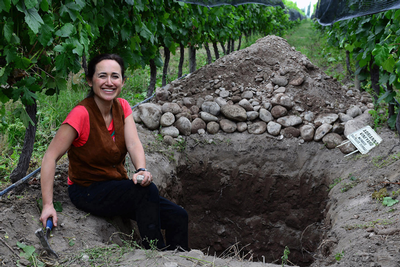
Domaine Nico Grand Mere Pinot Noir 2017
- Uco Valley, Argentina
- Winery named after Laura Catena’s great-grandfather
- Planted 1993 to Dijon clones
- Limestone soil
- 3675-4921 feet elevation
- 20% whole cluster fermentation in small vats
- 7-10 day maceration with punchdowns
- Aged in 2nd fill French oak barrels for 14 months
- 92 points James Suckling, 90 points Wine Advocate
- Raspberry, red cherry, cinnamon

Casir dos Santos Maipe Malbec 2018
- Maipu Valley, Argentina
- From one of the oldest Argentinian wineries, founded in 1862
- Name means “lord of the wind”
- 2017 named Wine Enthusiast Top 100 Best Buy
- Produced from 34 acres of old Malbec vines, some up to 100 years old
- Aged 4 months in oak
- Plum, fig, allspice


